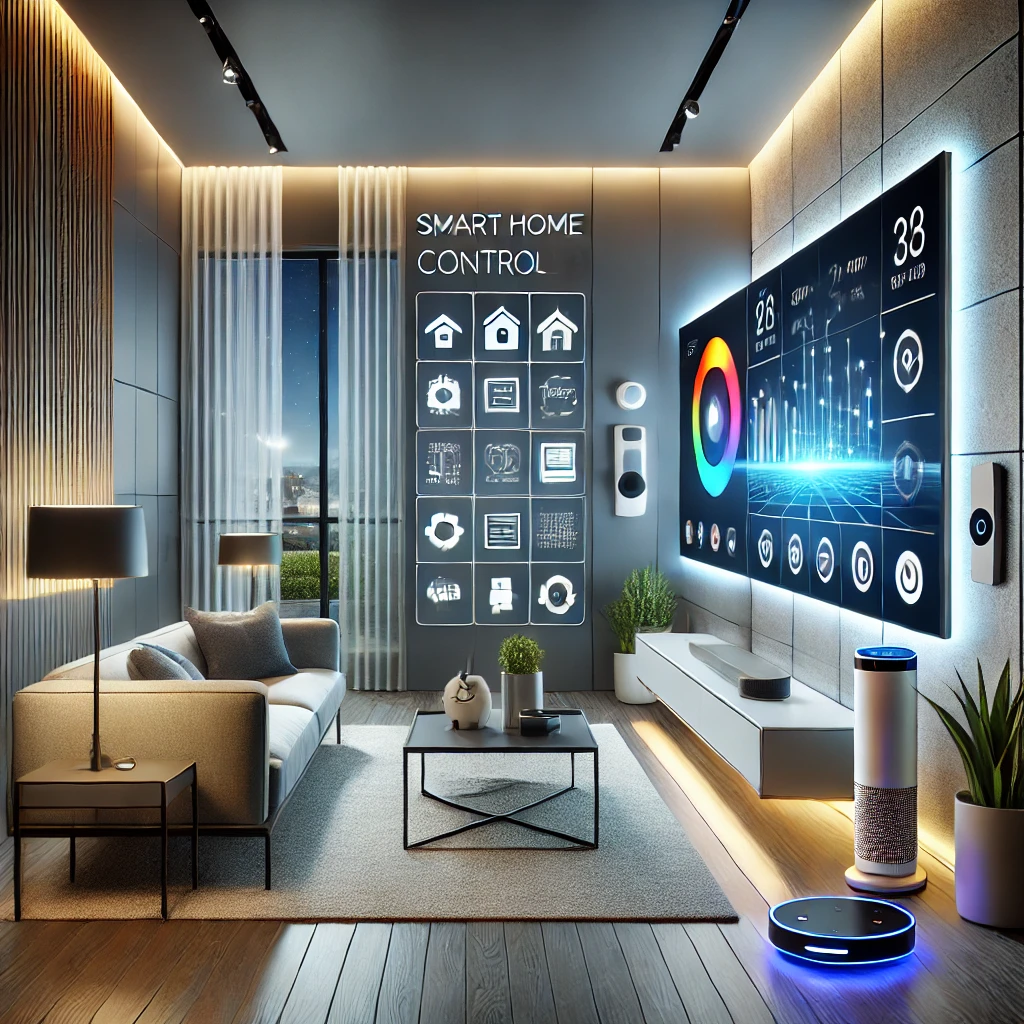Smart home technology integration is transforming the way we live, work, and interact with our surroundings. With the rise of the Internet of Things (IoT), smart homes have become more than just a luxury — they are a gateway to improved security, energy efficiency, and convenience. In this article, we will delve deep into the world of smart home technology, exploring its benefits, key components, and the latest trends shaping this exciting space. Whether you’re a homeowner looking to upgrade or simply curious about the future of living, this comprehensive guide will provide you with everything you need to know.
What Is Smart Home Technology Integration?
Smart home technology refers to the integration of connected devices and systems that automate and enhance everyday tasks in a home. From lighting and heating to security systems and appliances, smart technology allows homeowners to control various aspects of their living spaces remotely, often through a smartphone or tablet. With smart home technology integration, these devices communicate with each other, creating a seamless experience that enhances comfort, efficiency, and security.
How Smart Home Technology Works
At its core, a smart home is powered by a central hub or platform, often referred to as a smart home hub or home automation system. This hub connects all your smart devices, allowing them to communicate with each other and with you. Some of the most popular platforms include Amazon Alexa, Google Home, and Apple HomeKit, which act as the brain of the system, coordinating devices such as:
- Smart lighting systems (e.g., Philips Hue)
- Smart thermostats (e.g., Nest, Ecobee)
- Smart security cameras (e.g., Ring, Arlo)
- Smart locks (e.g., August, Schlage)
- Smart speakers (e.g., Sonos, Amazon Echo)
These devices are typically connected via Wi-Fi, Zigbee, Z-Wave, or Bluetooth, depending on the type of communication protocol they use. The homeowner can then control all aspects of their home via voice commands or mobile apps, making daily tasks simpler and more efficient.
The Benefits of Smart Home Technology Integration
The rise of smart home technology isn’t just a tech fad — it’s driven by real benefits that make life easier, safer, and more economical. Below, we explore some of the most significant advantages of integrating smart technology into your home.
Improved Home Security
One of the biggest draws of smart home technology integration is enhanced security. Smart security systems, which include cameras, motion sensors, door locks, and alarm systems, allow homeowners to monitor their property in real-time from anywhere in the world. With connected security systems, you can:
- Receive instant alerts if motion is detected while you’re away.
- View live or recorded video feeds from your smartphone.
- Lock or unlock doors remotely.
- Integrate doorbell cameras to communicate with visitors.
For example, systems like Ring or Nest cameras provide users with a live feed of their home surroundings, enabling peace of mind whether they’re on vacation or at work.
Energy Efficiency and Cost Savings
Smart homes help you save on energy costs by optimizing how and when energy is used. Smart thermostats, such as Nest and Ecobee, automatically adjust the temperature based on your daily routines. These systems learn your habits and make recommendations that can significantly reduce your energy consumption.
Moreover, smart lighting systems, like Philips Hue, allow you to control lighting remotely or set them to turn on/off at certain times, reducing wasted energy. Some systems even adjust based on natural light, ensuring your home is always lit efficiently.
Enhanced Comfort and Convenience
With smart home technology integration, daily tasks become effortless. Imagine arriving home after work, and your home welcomes you by adjusting the temperature, turning on the lights, and playing your favorite music. This level of automation allows homeowners to focus on more important tasks, leaving mundane activities to technology.
Voice-activated devices, like Amazon Alexa and Google Assistant, take this convenience further by allowing you to control your entire home with simple voice commands. Whether it’s setting reminders, controlling appliances, or adjusting the lighting, smart devices make everyday living more seamless and intuitive.
Remote Monitoring and Control
Perhaps the most significant feature of smart home technology is the ability to monitor and control your home remotely. Using a smartphone or tablet, you can check the status of your home’s various systems and make adjustments on the go. Forgot to turn off the lights? No problem. Need to let a friend into your home while you’re out? Simply unlock the door remotely through your smart lock app.
Future-Proofing Your Home
Investing in smart home technology integration not only enhances your current living experience but also future-proofs your home for years to come. As smart devices become more advanced, they will seamlessly integrate into your existing system, adding new features and capabilities. A well-integrated smart home can also increase the property value, as future buyers will appreciate the convenience and efficiency it offers.
Key Components of a Smart Home System
To truly harness the power of smart home technology integration, it’s important to understand the key components that make up a smart home. Below are the essential devices and systems that every smart home should have.
Smart Lighting
Smart lighting systems, like Philips Hue or LIFX, allow homeowners to control the brightness, color, and schedule of their lights from their smartphone. These systems can be programmed to respond to different events, such as dimming the lights when watching a movie or turning them off when no one is home.
Smart Thermostats
Smart thermostats, such as Nest or Ecobee, learn your daily routines and adjust the temperature accordingly. This not only improves comfort but also reduces energy waste. Most smart thermostats can be controlled remotely, allowing you to adjust your home’s climate even when you’re away.
Smart Security Systems
Smart security systems, like Ring, Arlo, or ADT, provide an integrated solution for home monitoring. These systems include security cameras, motion sensors, and alarms, all of which can be controlled and monitored remotely via a mobile app. Some systems even offer professional monitoring services for an added layer of security.
Smart Locks
Smart locks, like August and Schlage, provide keyless entry to your home and can be locked/unlocked remotely. You can also set up temporary access for guests or service providers, ensuring that you have complete control over who enters your home.
Smart Appliances
From smart refrigerators to washing machines, smart appliances can be connected to your home network, allowing for remote monitoring and control. For example, you can start your dishwasher or washing machine while at work, or check the contents of your fridge from the grocery store.
Latest Trends in Smart Home Technology for 2024
As smart home technology integration continues to evolve, new trends are emerging that promise to revolutionize the way we interact with our living spaces. Here are some of the latest trends to watch for in 2024 and beyond.
AI-Powered Smart Homes
Artificial intelligence (AI) is playing a significant role in enhancing the capabilities of smart home systems. AI-powered devices can learn from your behavior and preferences, making automatic adjustments to your environment. For example, AI-driven thermostats can anticipate your comfort needs based on weather patterns and past usage, while smart assistants like Amazon Alexa are becoming more conversational and intuitive.
Health Monitoring Devices
Smart home technology is expanding into health and wellness. Devices like smart beds, smart air purifiers, and smart fitness equipment are gaining popularity, allowing homeowners to monitor their health and well-being more closely. For instance, smart air quality sensors can detect pollutants in the home and adjust ventilation or filtration systems accordingly.
Increased Focus on Sustainability
Sustainability is a growing concern, and smart home technology is adapting to meet these needs. Smart irrigation systems for gardens, energy-efficient appliances, and solar-powered smart home devices are on the rise, allowing homeowners to reduce their environmental footprint while enjoying the benefits of automation.
Interoperability Between Devices
As more smart devices enter the market, there’s an increasing demand for better interoperability between brands and platforms. New technologies like Matter, a universal standard for smart home devices, are being developed to ensure seamless communication across different ecosystems, regardless of the brand.
Conclusion: Embrace the Future with Smart Home Technology
Smart home technology integration is no longer a luxury reserved for tech enthusiasts — it’s quickly becoming a mainstream solution for improving security, efficiency, and convenience in homes around the world. As the technology continues to evolve, the possibilities for creating a truly connected and automated living space are endless.
Whether you’re starting small with a few smart devices or looking to fully automate your home, investing in smart home technology is a step toward a more comfortable, secure, and energy-efficient future.
For more information on the latest smart home technology trends, you can explore this guide on smart home devices to see which products are leading the market.




